#orograph
Text


Salvala - shot by Orograph / designs by Andrew Curwen
4 notes
·
View notes
Text

FKA Twigs photographed by Orograph for AVANTgarden #4 (2018)
#fka twigs#fashion#fashion photography#fashion magazine#golden#orograph#metallic color#metallic#avant garde#it girl#alien#princess#beauty#poc
12 notes
·
View notes
Text
Teen Melissa Moore Gets Her Mouth And Pussy Fucked
Pezones calientes
Wife sharing threesome
FAT ASS BBW CANDID
Insatiable brunette Honey Demon fucks nicely
Puta esposa mamando verga empinada y ofreciendo su panocha al cornudo
Busty milf pov titfucks cock and gets fucked by stepson
hot shemale teen Aubrey Kate Sex Utility Vehicle
Lola Fae is a petite sex bombshell
Getting all horny and naughty with my skinny MILF friend as we rub each other with lotion
#albertustaler#clayish#numeral's#orograph#salada#precisionism#pedropascaledit#synarthroses#calving#frousiest#narrow-laced#yogoite#schematologetically#gonfalcon#split-bottom#Garbe#heartrending#unvaliantly#rebuffable#Lubow
0 notes
Text
Sasha Foxxx Superb Handjob For Homeless Guy
Porn in bed and gay pakistani movietures CJ does a fine job sucking
Cute sluts feet cumshot
Sonakshi Sinha s OOPS MOMENT while sitting in the car boobs Cleavage
Straight blonde hot nude boy beach gay xxx Hardening Your Image
Straight men in showers gay Hearing the sound of more dollars, he was
desi girl undressing
Dressed porn scenes in group adventure alone hot honeys
Famosa
Paja de hetero joven
#disturbor#stratal#coenacula#hand-pitched#concealments#orographically#opposes#sow-bug#perkiness#swan-upping#unauthoritied#macrodactylia#parado#anecdota#bails#orgasmic#parenterally#homomerous#nonintelligence#confraternal
2 notes
·
View notes
Text

NASA satellite image of a wave cloud forming off of Amsterdam Island in the far southern Indian Ocean
1 note
·
View note
Text
The magic of mountains in Mesoamerica.
Active volcanoes covered in thick green coats of misty cloud forest and rainforest. A focal point, an epicenter, the meeting place between two oceans and two continents. The origin of the revered orchid, vanilla!
Here, an absurd amount of endemic species with very small limited distribution ranges in Central America and Mesoamerica. Out of about 700 species of reptiles living in Mesoamerica, over 200 live nowhere else. Out of about 550 species of amphibians living in Mesoamerica, over 350 live nowhere else.
And this extreme biodiversity is boosted by the presence of so many mountain ranges located within the tropics, so that “cooler” habitats (at high elevations) can exist closer to the heat of the equator. And orographic uplift (rain in the mountains) means that humid and wetter habitats (”sky islands”) can exist closer to dryland habitats (arid valleys). And also different habitats can occur so close next to each other along the slopes of a single mountain (”altitudinal zonation”). And this is in addition to how the region is the meeting place between ecosystems of South America and North America, and between the Caribbean Sea and the Pacific Ocean.
So that there can be about 30 species of hummingbirds that only live in Mexico and Central America.
Or there can be like 11 different species of venomous palm pit vipers all in the same genus living in just a couple of mountain ranges between merely San Jose and Ciudad de Guatemala.
Or how, within the borders of Guatemala alone there are at least 40 different species of salamanders, and most of them are so-called arboreal “climbing salamanders” which live in bromeliads and fern mats growing in the branches of trees.
Like how the mangrove hummingbird only lives in brackish swamps of the mangrove forests along the seashore of a stretch of coastline only within the borders of Costa Rica, and the hummingbird depends on the nectar from the flower of one species of tea mangrove (Pelliciera rhizophorae).
Consider the Motagua beaded lizard (Heloderma charlesbogerti), a species of venomous lizard in the same genus as and closely related to the beloved Gila monster. It’s an endemic species, living only in one valley, and there are less than 200 Motagua beaded lizards surviving in the wild. It’s “one of the rarest and most endangered lizards on the planet.” And for food, it relies on the eggs of the Motagua spiny-tailed iguana (Ctenosaura palearis), of which there are less than 2,500 surviving in the wild, making it another of the planet’s most endangered lizards. Two lizards, found nowhere else, entwined in a relationship, almost extinct. But it gets more incredible. For food, the Motagua spiny-tailed iguana itself relies on the fruit of several cactus species. (One of the dryland plants that the iguana relies on is Pereskia lychnidiflora, one of the only cactus-type plants that basically produces leaves.) Without the cactus fruit, the Motagua spiny-tailed iguana would disappear. Without the Motagua spiny-tailed iguana’s eggs, the venomous Motagua beaded lizard would disappear.
Think of frogs like Bromeliohyla bromeliacia. There are colorful poisonous tree frogs whose aquatic baby tadpoles swim around in the tiny pools of rain water that temporarily collect in flowers growing on tree branches and in forest canopies. A whole multiplicity of “small” worlds existing, some ephemerally and some more permanently. Whole unique ecosystems in the treetops.
Here, the Pacific Ocean and the Atlantic Ocean nearly kiss. They are separated by less than 70 kilometers of land! You could stand on the peak of a Central American volcano, drinking native cocoa flavored with vanilla, and nearly toss a stone between these two marine universes.
Amphibians, reptiles, and hummingbirds in Mesoamerica were just like: “Let’s find a mist-shrouded cloud forest near the slopes of an active volcano in a single mountain range and only live in an area under 5 square kilometeres in size and only between the elevations of 1450 and 1650 meters.” (This is the famous recently-extinct golden toad of the Monteverde cloud forest and the slopes of the Arenal volcano.) Then these creatures were like: “Also I’m probably extravagantly colored with neon blue or fiery orange or bright pink or something.”
“And I’ll live nowhere else on the planet.”
192 notes
·
View notes
Text
High obliquity (axial tilt) worlds are really very strange. The ice caps of terrestrial planets with substantial water inventories creep down from their high polar latitudes as you increase tilt, blanketing more and more of the surface in ice sheets right up until you reach a tipping point found somewhere around forty to fifty degrees. There, due to the way sunlight is distributed across the planet seasonally - like a sunbather turning over just twice a year - the ice caps suddenly migrate into a new configuration, hot polar summers driving the formation of an ice belt around the equator. We know Earth likely can't enter such a state (although a few papers claim otherwise) - the tidal influence of the Moon, coming in at just over one percent of the Earth's mass, is thought to damp down the spin-orbit resonances that drive axial wobble.
But then there's Mars with its two pebble-like asteroid-moons, axial tilt relatively free to wander compared to the Earth. From <20 to >50 degrees it lurches around on, as far as we can tell, a timescale of hundreds of kiloyears to a few megayears - really surprisingly short in geological time. Interestingly, there's evidence* in the paper above that those periods of higher 30-50+ degree obliquity have, taken cumulatively over the whole post-Noachian history of Mars, lasted for up to a billion years. It'd have been interesting if we got to see Mars during these relative ice ages, a Mars almost more white than red, or a Mars with its lowlands bisected by a great wall of ice... The (orographic?) snow west of the four big Tharsis volcanoes in the high-obliquity present-atmosphere model (bottom right) below is kind of fun I think.
Also kind of interesting that so much snow piles up on the high-altitude uplands in scenarios with more Earthlike atmospheric pressures (if not compositions), mostly independent of obliquity. Seems fairly plausible that you'd get a similar kind of scenario when terraforming Mars or Marslike exoplanets, ending up with deeply glaciated highlands feeding glacial rivers down into lakes and seas in the more temperate lowlands. It does things just a little more difficult though - ice is more reflective than dirt, and all that increased sunlight bounced back into space means you'd need to ramp up the heat you inject into the climate as you get into the pressure ranges where polar ice can sublimate into the atmosphere and fall as snow or risk atmospheric collapse... realistically of course you're doing that anyway with your soletta mirrors and all that. Food for thought, though.
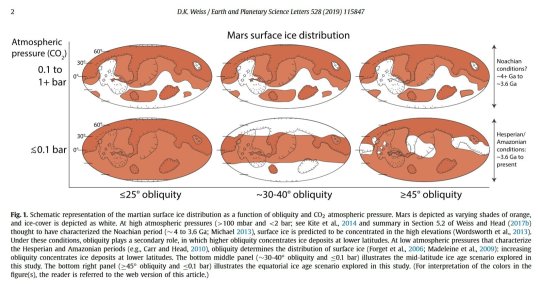
(*)The paper looks for a specific kind of crater that probably only forms when a meteor strikes an ice sheet, and finds a fair chunk of them down in the midlatitudes and equatorial regions.
12 notes
·
View notes
Text
Your Blood that I Bleed
Hashtag_DriveBy
Summary:
Ezio said, “She is his; the Gift the Apple bestowed upon him.”
Not knowledge and the ability to use it, as Altaïr had asked, or for renewed youth and purpose, as Ezio had. No, when holding the Apple and the ability to wish for anything he desired, Desmond had humbly asked for nothing more and nothing less than the smallest of companions. One that he knew. One that he’d lost, at some point in his too few years. One who was more than willing to cross time and space to be at his side again.
Live a Life or Die Trying
esama
Summary:
There's someone in Dracula's Castle who does not belong there
Stargate Brotherhood
esama
Summary:
In which there is a solar flare
Flowers For a Planet
esama
Summary:
There are flowers growing in the Grey.
Let me be without regret
WhisperingDarkness
Summary:
That time Desmond wore a white sheet (and also changed history).
Orographic Lifts
TimTheToaster (tabletoptime)
Summary:
Ezio wouldn’t say he had been expecting anything in particular, but if he had been, it certainly wouldn’t have been this.
What he found, in the chamber where the glowing phantom of a goddess once spoke past him, was three figures splayed across the strange stone floor.
All three were naked, and all three of them had wings.
In which some people get answers and other people just have the Weirdest Day.
Figments of My Imagination
Aelwyn
Summary:
When Altaïr was a child, he had two imaginary friends. Both of them claimed to be from the future, and both of them were immensely interested in some stupid Codex he hadn’t written yet.
When Ezio was a child, he had two imaginary friends. One of them was a famous Assassin who taught him everything his father tried to hide, and the other was from the future and wanted to know why he wore his hair like a girl.
When Desmond was a child, he had two imaginary friends. Both of them were from the past, both of them legendary members of the Assassin’s Brotherhood.
When Altaïr grew up, he wrote the stupid Codex and hated every minute of it because he knew they’d be smug. When Ezio was a teenager, everything he’d learned from Altaïr helped him save his family even though his father had kept him in the dark. When Desmond was a child, his father told him to grow up and stop believing in fairy tales.
When Ezio grew up, he followed Altaïr’s Codex and was told that he was a messenger for Desmond. When Desmond was a teenager, he ran away from the Farm.
When Desmond grew up, he realized his imaginary friends weren’t so imaginary after all.
Total System Overhaul
esama
Summary:
In which Shen Qingqiu gets a new System
I've fallen back into the Assassins Creed fandom and decided to share my favs. (there was one more but for the life of me I cannot find it)
3 notes
·
View notes
Text
orographic clouds
climbing over the mountain —
daybreak
4 notes
·
View notes
Photo
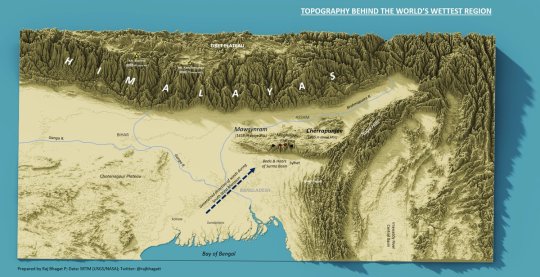
Topography behind the world's wettest places (Cherrapunjee and Mawsynram)
The humid winds of SWM hit the Khasi hills in Meghalaya after travelling over a very flat deltaic plains resulting in an orographic lift that results in some extreme rainfall.
by @rajbhagatt
86 notes
·
View notes
Note
hello my sunshine, i would like to know what is your favorite kind of weather (also sub question, what is your favorite type of cloud)
hi renn 🤭
i love rain. i love the ITCZ. i love orographic rainfall. i love conventional rainfall. i love biome classification by annual rainfall levels. i don’t particularly love being outside in the rain because it’s wet, but i love watching it
3 notes
·
View notes
Text
Endwalker spoilers within
Pushing his hood back and pulling his mask off, Nganno grins. Shimmering lights dance around his head as he sits, uncaring for getting his robe dusty.
Looking down at the map he has been given, his smile only grows. Running his hands over the depicted territory, his glowing eyes dance back and forth as he plans.
The ground is mostly baked clay, he thinks to himself, and I don't want to disrupt that.
Hm.
What if... I rose some mountains along the coast? That would cause orographic precipitation quite nicely.
Of course, it will need a way to drain to the ocean... Rivers, I think. Winding and twisting like a serpent.
Yes, that will be perfect.

~~~~~
Today, I make the Amaurotine version of one of my existing characters! Nganno, the Unsundered counterpart to Alha.
7 notes
·
View notes
Text
Biomes of Sogant Raha: Tropical forests, alpine and polar savannah
Tropical forest
Sogant Raha is comparable in size and rotation speed to Earth; therefore, it has the same number of atmospheric cells, i.e., two polar cells, two Ferrell cells, and two Hadley cells. Like Earth, the zone between the two Hadley cells is a major convergence zone for prevailing winds bearing warm, moist air toward the equator. Near the equator, that air cools, releasing its moisture, and rises; thick tropical forests are produced, with rainforests dominating the lowlands and coasts, and dry tropical forests with a distinct rainy season dominating the highlands and inland regions.
Sogant Raha's lower axial tilt reduces the astronomically-defined tropics considerably; since the planet is overall a little drier and atmosphere a little thinner, the climactic tropics are similarly reduced as well. The large rain shadow produced by the Arduinn Mountains and the Kelrus Plateau means there are no tropics on the leeward part of Vinsamaren, and the large continental landmass of Rezana limits the region of tropical forest in the eastern part of that continent to an area of orographically-induced precipitation between the lowlands and the mountains.
One feature of the tropical and subtropical zones that Sogant Raha lacks entirely are monsoon forests. Earth's monsoons are a seasonal phenomenon, driven by the shift of the intertropical convergence zone with the changing seasons. Sogant Raha's axial tilt is much smaller, as are its seasonal variations in temperature; the intertropical convergence zone moves very little throughout the year.

[Above: the major tropical forest regions of Sogant Raha, from west to east: south Karei, the Rocallan jungle, western Lanai, the Great Vinsamaren Jungle, southeast Deirama, the Jungle of Tigers, Kuj, and the northern Windlands]
Alpine savannah
"Alpine savannah" is here a catchall term for all mountain regions above the treeline, whose height varies with latitude. The largest alpine savannah regions are to be found in the Arduinn Mountains and on the Kelrus Plateau; even though much of these highlands are located on or near the equator, they are a region of fierce tectonic uplift, driven by the convergence of the eastern and western Vinsamaren plates.
Sogant Raha is not currently in an ice age, and though its global temperature does vary considerably over geological timescales, it does not have the same semi-regular cycle of glaciation that the Earth does. Thus, it has no permanent ice cover even in high mountains, and no permanent polar ice.

[Above: the major alpine savannah regions of Vinsamaren and Altuum]
Polar savannah
Between the slightly warmer climate and the smaller amount of circumpolar land, Sogant Raha's poles are positively balmy comared to, say, Antarctica. But they're still cold compared to the rest of the planet and comparatively dry; and of course they get much less sunlight. Within and near the small polar circles, a "polar savannah" biome dominates, which is characterized by a lack of tree cover, low precipitation, and plant life adapted to long periods of winter darkness. These regions are similar to Earth's tundras, but except at high altitudes, they lack a permafrost layer.
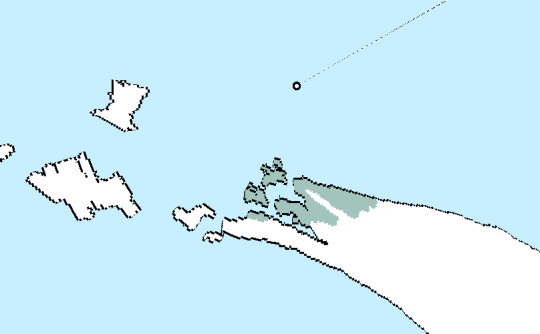
[Above: the small region of polar savannah at the northern tip of Altuum, near Sogant Raha’s north pole.]
18 notes
·
View notes
Note
im LATE but. what weather am i
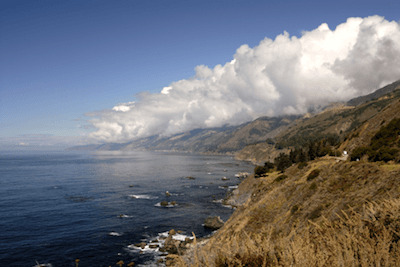
Orographic clouds! Or a good ol fashioned hurricane
2 notes
·
View notes
Text
Majestic Mountains: Guardians of Beauty and Harmony
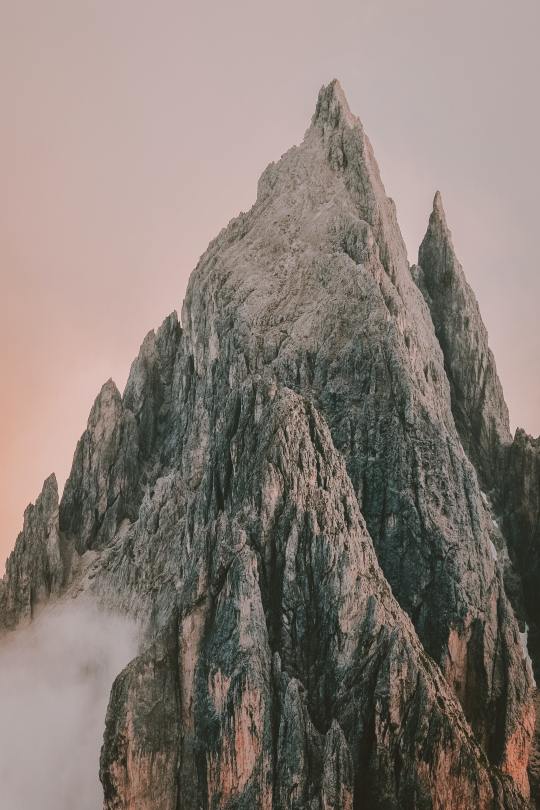
Rising high into the sky, mountains have an undeniable allure that captivates our senses and fills us with awe. But beyond their breathtaking beauty, these majestic giants play a vital role in shaping our planet's landscapes and maintaining ecological balance. Join us on a journey to explore the wonders of mountains and discover the secrets they hold.
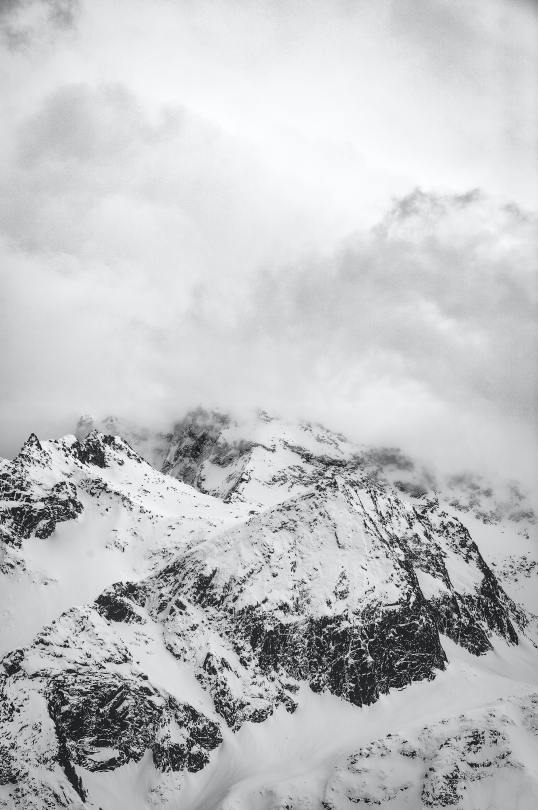
Sculptors of Scenic Splendor:
Mountains are nature's masterpieces, sculpted over millions of years by tectonic forces and the erosion of wind and water. Their towering peaks, jagged ridges, and deep valleys create a visual feast for our eyes. As we gaze upon their majestic forms, we witness the power and artistry of Earth's geological processes, reminding us of the ever-changing nature of our world.
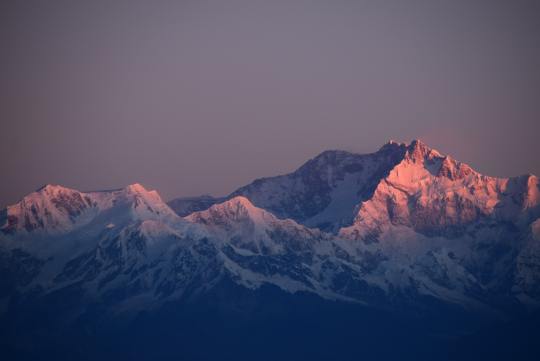
Guardians of Biodiversity:
Mountains are sanctuaries of life, harboring a remarkable array of plant and animal species found nowhere else on Earth. The varying altitudes and microclimates within mountain ranges provide diverse habitats for flora and fauna, fostering biodiversity hotspots. From hardy alpine flowers to elusive mountain goats, these resilient organisms have adapted to the harsh conditions, showcasing the marvels of evolution.

Water Towers of the World:
Beyond their visual splendor, mountains hold a vital role in regulating global water systems. They act as "water towers," capturing and storing vast quantities of precipitation in the form of snow and glaciers. As temperatures rise, these frozen reservoirs slowly release water downstream, ensuring a steady flow of freshwater to rivers, lakes, and ecosystems, sustaining countless lives along their course.
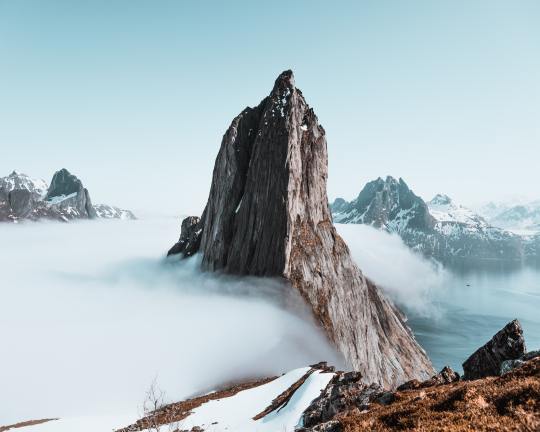
Shields Against the Elements:
Mountains serve as natural shields, protecting regions from extreme weather patterns. Their height influences wind patterns, causing air masses to rise, cool, and release moisture as rain or snow. This process, known as orographic precipitation, not only nourishes nearby landscapes but also influences climate patterns, making mountains vital in maintaining regional weather stability.

Recreational Havens and Spiritual Retreats:
Beyond their ecological significance, mountains provide solace and inspiration to countless people. They offer an escape from the bustle of modern life, inviting us to embark on adventures, whether hiking, skiing, or simply enjoying the panoramic views. The tranquility and grandeur of mountains have the power to heal our souls, offering a spiritual connection to the natural world.
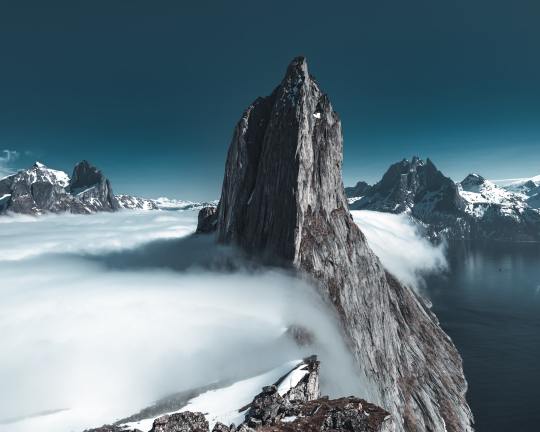
Mountains are more than just geological formations; they are guardians of beauty, protectors of biodiversity, and essential components of our planet's intricate systems. Their significance extends beyond their physical presence, touching our hearts and souls in profound ways. Let us cherish and respect these majestic wonders, preserving their splendor for generations to come. So, next time you gaze upon a mountain range, remember the secrets it holds and the role it plays in maintaining harmony in our world.
#mountainbeauty#naturewonders#ecosystemguardians#biodiversityhotspots#watertowers#naturalprotection#adventureseekers#soulfulretreats#preservingsplendor#harmonyinnature#nature#artwork#wildflowers#landscape#naturfotografie#aesthetic#naturecore#photoart#photographers#naturephotography#photography#greenery#landscapephotography#landscapes#animal#animals#cute animals#adorable#pretty#travel
2 notes
·
View notes
Text
summer of knowledge (day one)
im starting a little daily thing this summer called the summer of knowledge where i pick a topic at random and write notes and learn about it
i decided that i would post them here on tumblr bc i thought that other people might enjoy it IDK
anyways i was supposed to post this yesterday but i forgor (skull emoji)
june 1st was cloud types
clouds are made up of water droplets or ice crystals
there are three levels to clouds, high, mid-level, and low clouds.
high clouds (16,500-45,000 feet)
cirrus
feathery clouds that are made of mostly ice crystals
the wispy shape is from wind currents that twist and spread the ice crystals into strands
cirrostratus
thin, white clouds that cover the sky. usually seen in the winter
meaning: rain or snow soon
cirrocumulus
thin, patchy, sheet-like clouds. sometimes look grainy or full of ripples
meaning: good weather but cold, but if you live in the tropics this could be a sign of an approaching hurricane
mid-level clouds (6,500-23,000 feet)
altocumulus
several patchy white or gray layers. many rows of fluffy ripples
made of liquid water but dont usually produce rain
meaning: weather is fair
altostratus
gray or blue-gray clouds made up of ice crystals and water droplets. usually covers the entire sky
meaning: continuous rain or snow
nimbostratus
dark, gray clouds that seem to fade into falling rain or snow
very thick and blocks out any sunlight
meaning: gloomy with continuous rain or snow
low clouds (less than 6,500 feet)
cumulus
fluffy, white clouds
what most people think of when they think of clouds
weather: fair
stratus
thin, white sheets covering the whole sky
very thin so they dont produce much rain or snow
weather: fair but gloomy
cumulonimbus
what people think of when they think of a storm cloud
grow on hot days when warm, wet air rises very high into the sky
weather: possibility for rain, hail, or tornadoes
stratocumulus
patchy gray or white clouds that sometimes have a honeycomb like appearence
weather: fair weather for now but a storm could be approaching
other special clouds
contrails
made by high flying jet planes
still technically clouds because they are made of water droplets condensed from the water vapor in the exhaust of the jet engines
can tell us about the layers of moisture in the sky
mammatus clouds
actually altocumulus, cirrus, cumulonimbus, or other types of clouds that have these pouch-like shapes hanging out of the bottom
the pouches are made when cold air in the cloud sinks down towards earth
weather: severe weather might be on its way
orographic clouds
get their shape from mountains or hills that force the air to move over or around them
can also be formed by seabreezes and often appear as lines where two air masses meet
weather: afternoon thunderstorms could be a possibility
lenticular clouds
shaped like lenses or almonds
they get their shape from hilly terrain or just the way air is rising over flat terrain
other facts
clouds are named based on their shape and how high they hover in the troposphere
The genera names are all formed from the same five latin terms — cirro, cumulo, strato, nimbo, alto — which are mixed and matched to create names like cumulonimbus, cirrostratus, cirrocumuus…. you get the idea. Learning what each of these Latin roots means is key to keeping your clouds straight:
Cumulo translates to “heaped.” Think puffy, piled, marshmellowy clouds.
Strato translates to “layered.” Clouds with strato in their name are often flat and form a wide layer across the sky.
Nimbo translates to “rain,” and is used for the two clouds that regularly produce rain.
Cirro translates to “curl.” These clouds are sometimes (but not always) curled and are found in the highest layer of the troposphere.
Alto translates to “high.” Confusingly, this doesn’t mean the clouds in the highest part of the atmosphere, just that the cloud is higher relative to others of its type.
there were images but i can't put them on here because that is simply too much work.
also here are the websites i used
https://www.zmescience.com/feature-post/natural-sciences/climate-and-weather/weather-and-atmosphere/types-of-clouds/
https://scijinks.gov/clouds/
https://scied.ucar.edu/learning-zone/clouds/cloud-types (this one has fun games)
https://blog.nature.org/2020/09/22/whats-that-cloud-your-guide-to-cloudspotting/
anyways. there is no way in hell i am remembering any of these cloud names but i actually really enjoyed this topic. ive always been fascinated by clouds so i thought it would be fun to learn about ! i think my favorite clouds are the mammatus clouds and, i didn't write about these, but the Kelvin-Helmholtz clouds (they look like waves they are super cool)
ok ignore any spelling errors, enjoy learning about clouds, love you, goodnight
2 notes
·
View notes